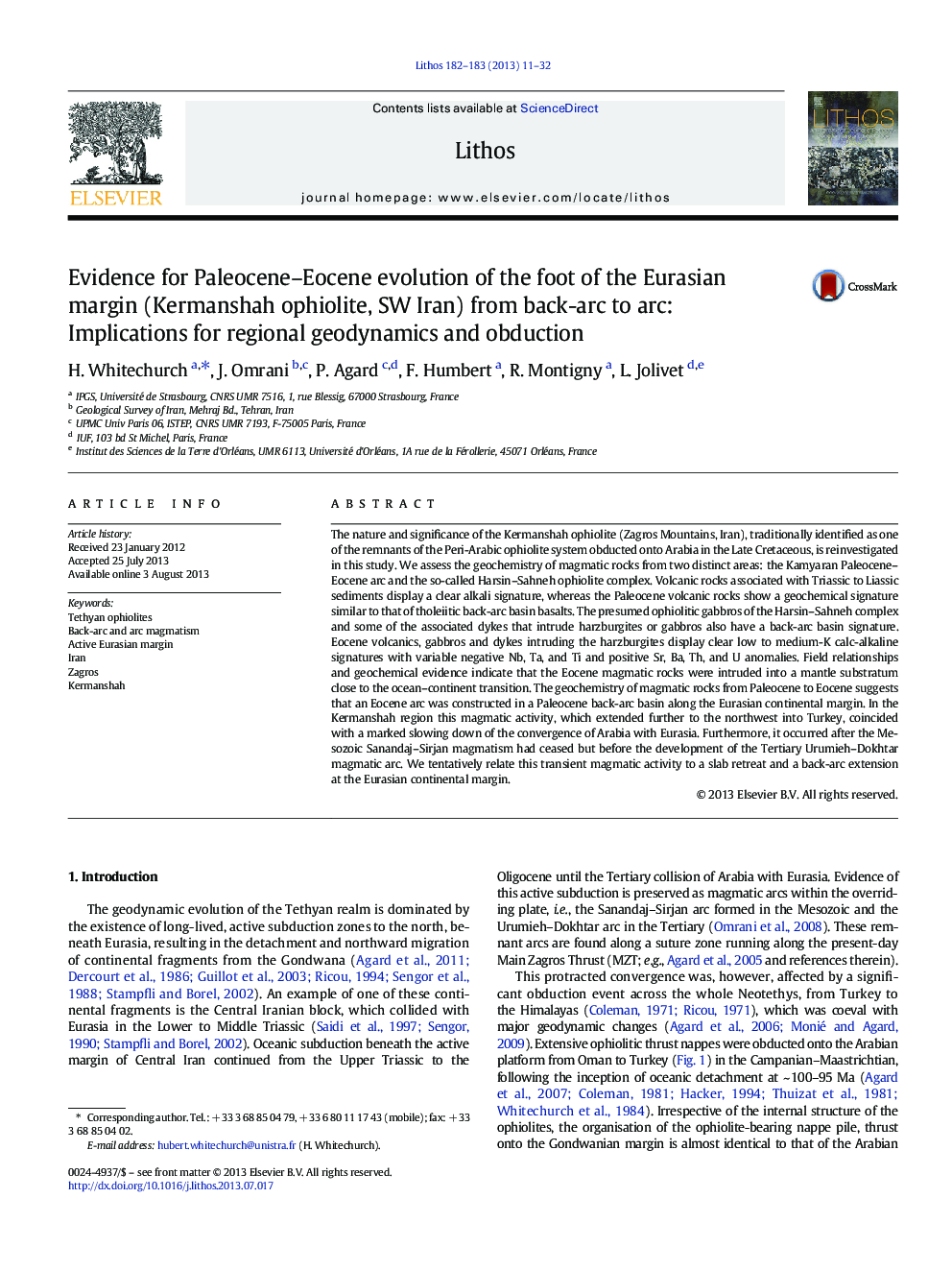| Article ID | Journal | Published Year | Pages | File Type |
|---|---|---|---|---|
| 6440825 | Lithos | 2013 | 22 Pages |
Abstract
The nature and significance of the Kermanshah ophiolite (Zagros Mountains, Iran), traditionally identified as one of the remnants of the Peri-Arabic ophiolite system obducted onto Arabia in the Late Cretaceous, is reinvestigated in this study. We assess the geochemistry of magmatic rocks from two distinct areas: the Kamyaran Paleocene-Eocene arc and the so-called Harsin-Sahneh ophiolite complex. Volcanic rocks associated with Triassic to Liassic sediments display a clear alkali signature, whereas the Paleocene volcanic rocks show a geochemical signature similar to that of tholeiitic back-arc basin basalts. The presumed ophiolitic gabbros of the Harsin-Sahneh complex and some of the associated dykes that intrude harzburgites or gabbros also have a back-arc basin signature. Eocene volcanics, gabbros and dykes intruding the harzburgites display clear low to medium-K calc-alkaline signatures with variable negative Nb, Ta, and Ti and positive Sr, Ba, Th, and U anomalies. Field relationships and geochemical evidence indicate that the Eocene magmatic rocks were intruded into a mantle substratum close to the ocean-continent transition. The geochemistry of magmatic rocks from Paleocene to Eocene suggests that an Eocene arc was constructed in a Paleocene back-arc basin along the Eurasian continental margin. In the Kermanshah region this magmatic activity, which extended further to the northwest into Turkey, coincided with a marked slowing down of the convergence of Arabia with Eurasia. Furthermore, it occurred after the Mesozoic Sanandaj-Sirjan magmatism had ceased but before the development of the Tertiary Urumieh-Dokhtar magmatic arc. We tentatively relate this transient magmatic activity to a slab retreat and a back-arc extension at the Eurasian continental margin.
Keywords
Related Topics
Physical Sciences and Engineering
Earth and Planetary Sciences
Geochemistry and Petrology
Authors
H. Whitechurch, J. Omrani, P. Agard, F. Humbert, R. Montigny, L. Jolivet,
